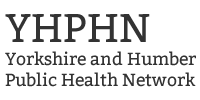People from lower Socioeconomic (SE) groups
Around 12 million adults in England are in a LSEG. Sport England research found that people in LSEGs are the most likely to be inactive (33%) and the least likely to be active (54%). This is particularly linked to income, education and local area deprivation.
Socioeconomic inequalities in physical inactivity are already evident by age 16–24. The gap between high and low-income individuals increases up until age 85. Further information can be found in the 2014 review of over 1million people here
The coronavirus pandemic has led to more people living on low incomes and living in poverty which will in term harm health and widen inequalities, such as rates of physical activity. Groups experiencing this impact of the pandemic are more likely to be from an ethnically diverse community or migrant group or disabled.
Poor housing conditions also exacerbate the ‘shielding/stay home’ requirements of the pandemic by increasing exposure due to crowded conditions and increasing stress. People from a LSEG and people from ethnically diverse communities are also less likely to have access to outside space, such as gardens, therefore furthering inequalities and reducing physical activity.
Research from Sport England shows that disabled people from lower socioeconomic groups are much more likely to be physically inactive than disabled people from higher socioeconomic groups (43% vs 29%). And, three times more likely to be inactive than non-disabled people from higher socioeconomic groups inactive (43% vs 14%). The Activity Alliance has created a new factsheet that provides insight on how deprivation affects some disabled people’s lives. It explores the relationship between poverty and disability. And, how both the causes and consequences of deprivation can impact a person’s desire, choice and opportunity to be active - here
Lower socio-economic groups (Sport England)
Recommendations (Socioeconomic SE)
- Ensure a safe environment and location which is free from discrimination (LGBTQ+) (RG)
- Access to gender neutral and women only facilities (LGBTQ+) (EMG)
- Ensure a safe environment and location which is free from discrimination (EMG) (WM)
- Use multiple recruitment and advertising strategies to engage and promote interventions (WM)
- Accessible green spaces, transport, voucher schemes to enable cohesion (OA) (LTC)
- Consultation to ensure interventions lead to community sustainability (RG) (OA)
